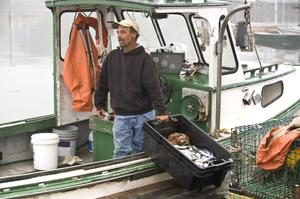The way in which you file your income tax return as a fisherman depends upon whether you are a self-employed fisherman, a part of a fishing partnership, or an employee of a fishing company. Learn about the different filing methods, as well as which items are defined as fishing income by the Canada Revenue Agency.

What Is Fishing Income?
Fishing income includes income, rebates, subsidies, grants, credits, or compensation for property or income losses incurred while working in the fishing industry. Some activities that produce fishing income are salt water fishing, inland fishing, and animal aquaculture.
Keep in mind that fishing income does not include income that is earned while working as an employee of a fishing company.
The Difference between Self-Employed Fishermen, Fishing Partnerships, and Fishing Employees
Fishing income is only claimed when you are working as either a self-employed fisherman or as a part of a fishing partnership, and not when you are employed by a fishing company.
You are considered a self-employed fisherman if you catch fish for profits and not for sport, and also if you also meet at least one of the following criteria:
- You either own or lease the boat used to catch fish
- You either own or lease the gear used to catch fish
- You hold a valid fishing license from Fisheries and Oceans Canada
- You profit from and are responsible for expenses related to fishing.
A fishing partnership involves a business relationship between two or more individuals that come together for business or trade reasons. All of the individuals involved bring money, property, and/or skills to the business relationship. Each person in the partnership is eligible to share the profits or losses of the business in return for their investment.
An employee of a fishing company receives payment for their skills while employed in a fishing company. Such an employee submits a personal income tax return as regular taxpayer, and not as a fisherman.
Fishing Guides and Reporting Forms
In addition to filing a personal income tax return, self-employed fishermen and those involved in a fishing partnership must also file a Form T2121 – Statement of Fishing Activities. As such, these fishermen are not required to submit a business tax return.
This form assists you in calculating your income and expenses. If you are involved in more than one fishing business, a separate Form T2121 must be completed for each one. While using this form is not mandatory, it may help you to ensure that you report your income correctly.
The Canada Revenue Agency provides the comprehensive Guide T4004, Fishing Income, to assist you with all fishing business reporting, calculation, and tax filing questions. The guide will help you to clarify things such as your capital cost allowance, capital expenditures, capital gains, and more. The CRA also provides Guide T4005, Fishers and Employment Insurance, to answer questions regarding employment insurance, record keeping, definitions, and the responsibilities of a fishing employer.
References & Resources
- CRA: Fishers and Employment Insurance
- TurboTax: Reporting Fishing Income
- TurboTax: The Cash Accounting Method
- TurboTax: The Accrual Method of Accounting


